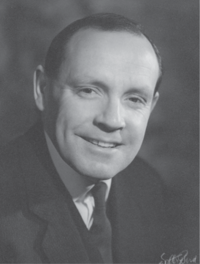Robin Coombs facts for kids
Quick facts for kids
Robin Coombs
|
|
|---|---|

Robin Coombs
|
|
| Born | 9 January 1921 London, England
|
| Died | 25 January 2006 (aged 85) Cambridge, England
|
| Nationality | British |
| Alma mater | University of Edinburgh King's College, Cambridge |
| Known for | Coombs test; Gell–Coombs classification |
| Awards | Gairdner Foundation International Award (1965) |
| Scientific career | |
| Fields | Immunology |
| Institutions | Corpus Christi College, Cambridge |
Robert Royston Amos Coombs (born January 9, 1921 – died January 25, 2006) was a British scientist. He was an immunologist, which means he studied the body's immune system. He is famous for helping to discover the Coombs test in 1945. This test helps doctors find special proteins called antibodies in the blood. It is used for things like checking blood types and understanding certain health conditions.
Contents
Who Was Robin Coombs?
Robin Coombs was born in London, England. He went to school in Cape Town, South Africa, at Diocesan College. Later, he came back to Britain. He studied to become a vet at the University of Edinburgh.
His Studies and Big Discovery
In 1943, Robin Coombs started studying at King's College, Cambridge. He worked on his advanced degree, called a doctorate, which he finished in 1947. But even before he finished, he made a huge discovery!
In 1945, he worked with two other scientists, Arthur Mourant and Robert Russell Race. Together, they found a new way to detect antibodies. This method is now known as the Coombs test. It's said that he first thought of the idea while riding on a train!
A Career in Immunology
Robin Coombs became a professor and researcher at the University of Cambridge. He worked in the Department of Pathology. He also helped start the Division of Immunology at Corpus Christi College. In 1966, he became the fourth Quick Professor of Biology, a special teaching role. He kept working at Cambridge University until 1988.
He once said that "red blood cells were primarily designed by God as tools for the immunologist." This shows how much he loved studying blood and the immune system.
In 1956, Coombs helped create the British Society for Immunology. This is a group for scientists who study the immune system in Britain. He was an important member of this society.
Awards and Special Recognition
Robin Coombs received many honors for his work. He got special degrees from the University of Guelph in Canada and the University of Edinburgh. He was also made a Fellow of the Royal Society in 1965. This is a very high honor for scientists in the United Kingdom. He was also a Fellow of the Royal College of Pathologists and an Honorary Fellow of the Royal College of Physicians. These titles show he was highly respected by other doctors and scientists.
Robin Coombs was married to Anne Blomfield, who was one of his first students. They had a son and a daughter.
Important Discoveries
Robin Coombs made several important contributions to science.
The Coombs Test Explained
The Coombs test is his most famous discovery. He developed it with Arthur Mourant and Robert Russell Race in 1945. This test is very important in medicine. It helps doctors understand many things about blood and the immune system. For example, it's used to check if a person's blood is safe for a blood transfusion.
How Our Immune System Reacts
Robin Coombs also worked with Professor Philip George Howthern Gell. Together, they created a way to classify how the immune system can sometimes cause harm to the body's own tissues. This is called the "Gell–Coombs classification." It describes four different ways the immune system can react.
He also worked with other scientists, W.E. Parish and A.F. Wells. They suggested a possible explanation for sudden infant death syndrome (SIDS). They thought it might be a strong reaction to certain proteins, like those found in dairy.
Awards
In 1967, Robin Coombs received the James Spence Gold Medal. This award from the Royal College of Paediatrics and Child Health recognized his important work in developing the Coombs test.

